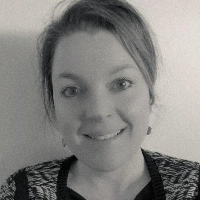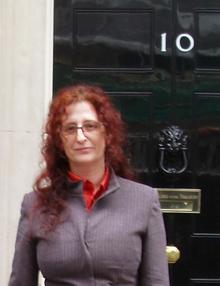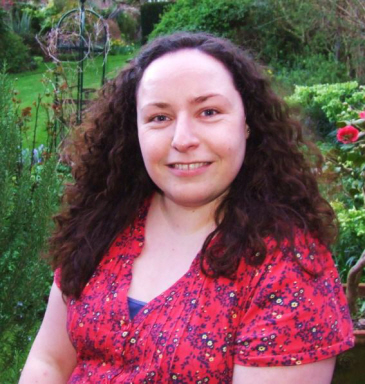A large painting and an imposing statue of the former Speaker of the House of Commons Betty Boothroyd overlooked a busy Boothroyd Room at Portcullis House in Westminster. Members of parliament, journalists, academics, NGOs and Third Sector organisations gathered to hear the reporting and discussion of a new report from Imperial College on the future of coal power in the UK as part of a All Party Parliamentary Climate Change Group meeting on 20 November 2014.
This report was commissioned by the World Wildlife Fund to give an idea of whether the continued operation of the eleven existing coal-fired plants in the UK is compatible with the UK’s targets for cutting greenhouse gas emissions.
Coal-fired power stations in the UK still generate approximately 36% of the country’s electricity (WWF briefing data). I was personally amazed how large this figure is and underlines the relevance of this type of economic modelling to the future of the energy mix in the UK.
The panel was chaired by Lord Oxburgh and consisted of Dr Robert Gross (Director, Imperial College Centre for Energy Policy and Technology), Tim Yeo MP (Chair, Energy and Climate Change Committee), Baroness Bryony Worthington (Shadow Spokesperson, Energy and Climate Change) and Jessica Lennard (Head of Corporate Affairs, Ovo Energy).
Launch of Imperial Collge rpt on #coal power (w WWF) & cld stations have a long life, threaten climate/energy policy pic.twitter.com/F35vtw8K6F
— Doug Parr (@doug_parr) November 25, 2014
After the report had been summarised by Robert Gross, each member of the panel had a chance to speak before the discussion was opened to the floor and this is where opinions and politics began to show their faces.
The first panel member to speak after the introduction of the report was Baroness Bryony Worthington, an enthusiastic environmental campaigner who was appointed to the Labour benches of the House of Lords in 2011. Her opposition to so-called “unabated” coal power (generation without measures to capture emitted carbon) was clear and unambiguous, describing coal power stations from the 1960s as unreliable, inefficient and polluting. Political and economic realities were also introduced when she noted that “old coal” will tend to squeeze out “new gas” due (at least in part) to the large infrastructure costs associated with building a new gas powered facility, in spite of its better environmental credentials. Baroness Worthington’s short response (panel members were only given 5 minutes to initially respond to the report) was enthusiastic and pulled no punches.
The next panel member to speak was Tim Yeo MP (a former Minister for the Environment and Countryside in John Major’s government in the 1990s). He openly stated that he shared Baroness Worthington’s concerns and that he supports “full decarbonisation”, although the details of this wish (commendable as they may be), were lacking. He criticised the “20th century energy mind-set” of many in political and industrial energy circles, i.e. those who simply want to build more generators. Although this jibe was clearly not aimed at any one body or person in particular, National Grid’s financial incentives to build more capacity were noted.
Jessica Lennard noted that their customers are not happy with the amount of coal currently in the energy mix that they are able to supply, which was clearly a worry for a company where customers are free to come and go as they please (noting that they are a supplier not a generator of energy).
As is increasingly the case nowadays, especially with such a potentially incendiary subject as future power generation, there were many members of the audience who were active on their twitter accounts during the meeting itself, myself included I should add. Those who were adding to the online debate, and keeping those who weren’t present in the loop included the head of modelling at the Committee on Climate Change, the public affairs team of the World Wildlife Fund and the UK chief scientist of Greenpeace, although none of the tweets that I noted at the time or since seemed particularly argumentative or controversial. I must admit I found this rather surprising. I was certainly expecting some fireworks, yet the meeting often seemed more like an academic conference than a committee meeting overlooking the Thames just a hundred metres or so from the Palace of Westminster itself.
By far the most animated person in the room (and on twitter before the meeting) was Baroness Worthington, noting that DECC’s “crossed fingers” were not enough on this issue.
. @DECCgovuk @GreenpeaceUK Hoping DECC might come to Boothroyd Rm, PCH @ 4.30pm + clarify UK coal policy. Crossing fingers not good enough.
— Bryony Worthington (@bryworthington) November 25, 2014
I personally left the meeting feeling that there is much still to do on this front and Lord Oxburgh echoed what I feel was a general feeling in the room, closing the meeting with a plea for “policy certainty” and I think this is something that everyone in the room would welcome.
This last point is particularly pertinent with the upcoming ‘COP21’ meeting in Paris in December 2015 because it is at this meeting that the United Nations Framework Convention on Climate Change negotiators will aim to agree on global, legally binding climate targets. Tim Yeo was clearly mindful of this, noting that the UK should aim to cut emissions by 40% with respect to 1990 levels “going in to Paris”. With coal power still such an important player in the UK energy mix, the potential for this industry to make inroads into this target are substantial.
This blog is written by Cabot Institute member, Dr Jonny Williams, an environmental physicist working in the School of Geographical Sciences at the University of Bristol.














